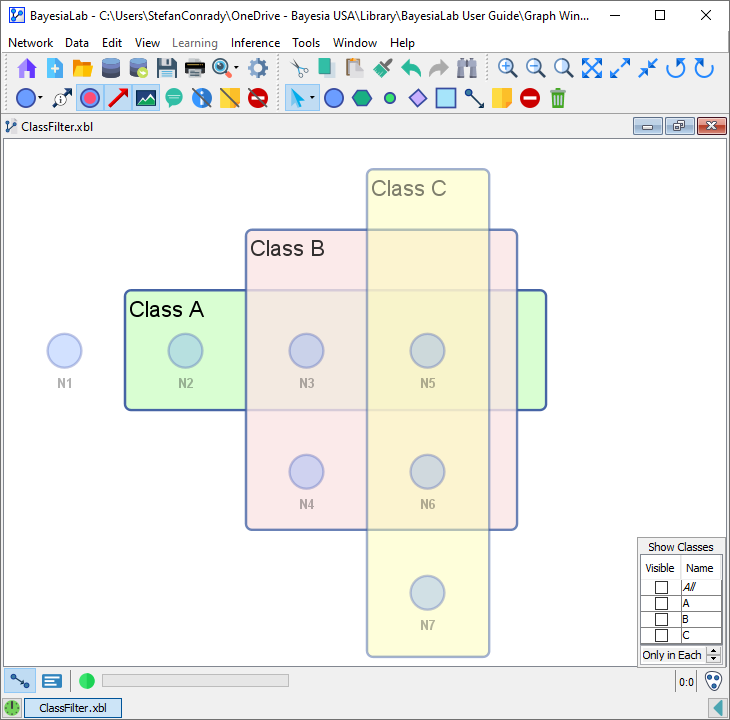Class Filter
Class Filter
-
Right-clicking on the Classes icon in the Status Bar brings up the list of all Classes, from which you can select which Classes to display in the Graph Window.
-
Additionally, there is a combo-box menu at the bottom of the list, which allows you to define a “filter” for displaying sets of Classes, a so-called Class Filter.
Example
- To help understand the function of the Class Filter, we illustrate it with the following example network.
- Classes A, B, and C are highlighted in color using BayesiaLab’s Notes functionality.
Defining a Class Filter
To explain the functionality of the Class Filter, we furthermore employ set operators and logical operators:
In this network, the nodes are assigned to Classes as follows:
-
Let U be the universal set
-
∅=
{}, the empty set, containing no classes -
The complements of the sets A, B, and C are denoted:
-
Let S be the set of Classes selected (checked) in the menu:
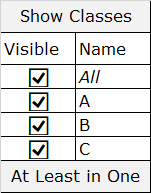
-
The complement of the set S is denoted
-
N ∈ S refers to nodes N belonging to the selected Classes.
-
∪ S means the union of selected Classes.
-
∩ S means the intersection of selected Classes.
To define a Class Filter, you need to select the Classes and furthermore specify what Set Operation to apply to them:
- OR/Union of selected Classes means that a node is a member of any (“at least in one”) of the checked Classes.
- The nodes N will be visible if N∈∪S∨N∈∅
- AND/Intersection of checked Classes means that a node is a member in all of the checked Classes (“at least in each”).
- The nodes N will be visible if (N∈∩S∨S≠∅)∧N∉∅
- STRICT AND/Intersection means that a node is only a member of the intersection of checked Classes (“only in each”), but not a member of any of the unchecked Classes.
- The nodes N will be visible if N∈∩S∧N∉ S’∧N∉∅
By default, the OR/Union operation (“at least in one”) is selected in the menu.
By default, the OR/Union operation (“at least in one”) is selected in the menu.
OR/Union (“At Least in One”)
Selection: All
Visible Nodes:
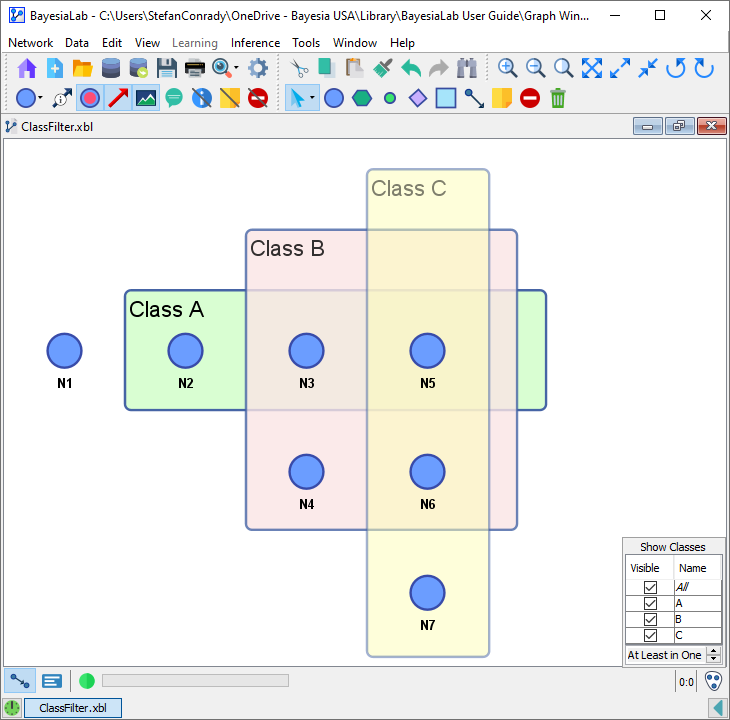
Selection: None
Visible Node:
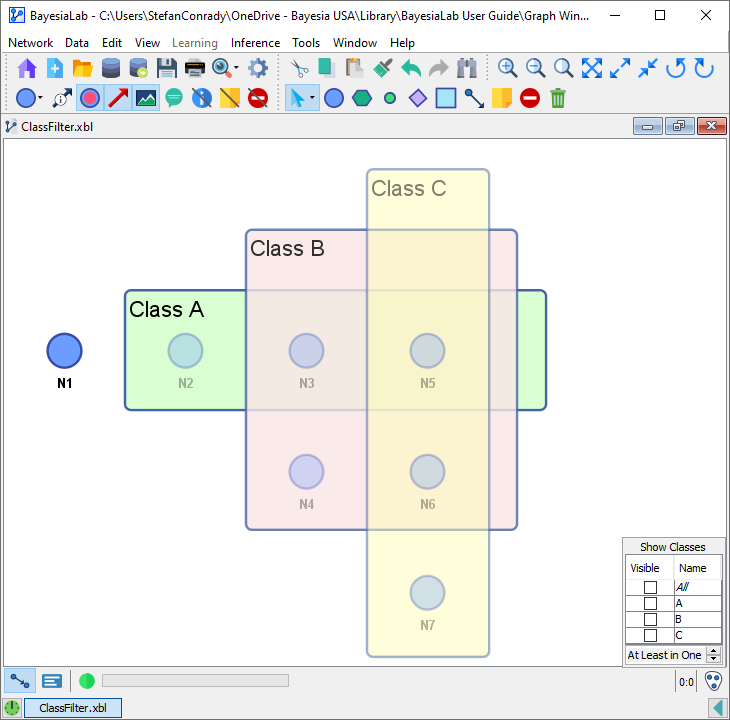
Selection: A
Visible Nodes:
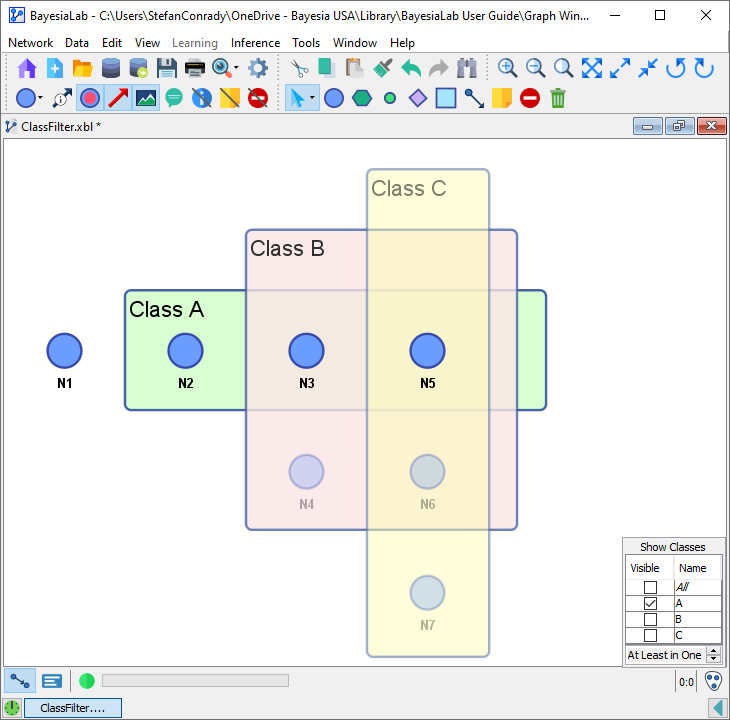
Selection: B
Visible Nodes:
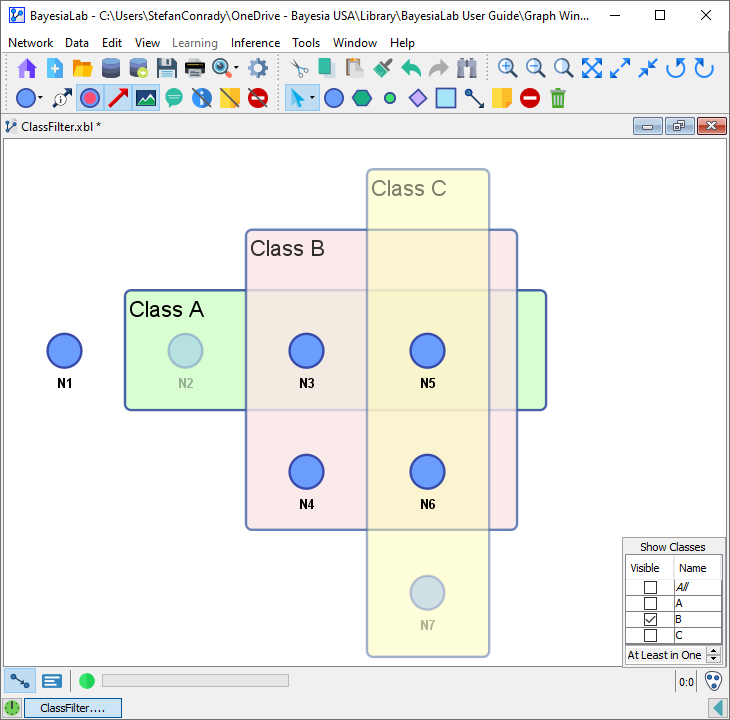
Selection: C
Visible Nodes:
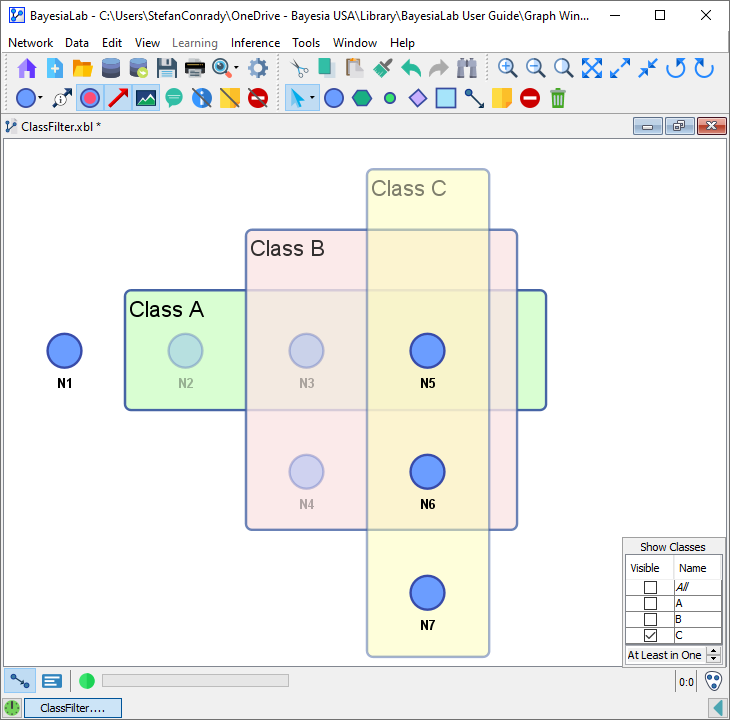
Selection: A, B
Visible Nodes:
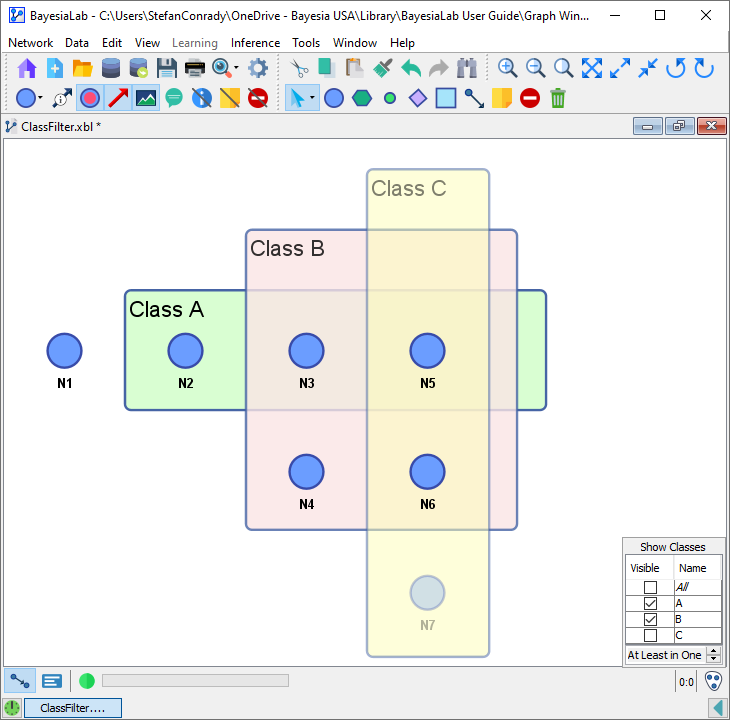
Selection: A, C
Visible Nodes:
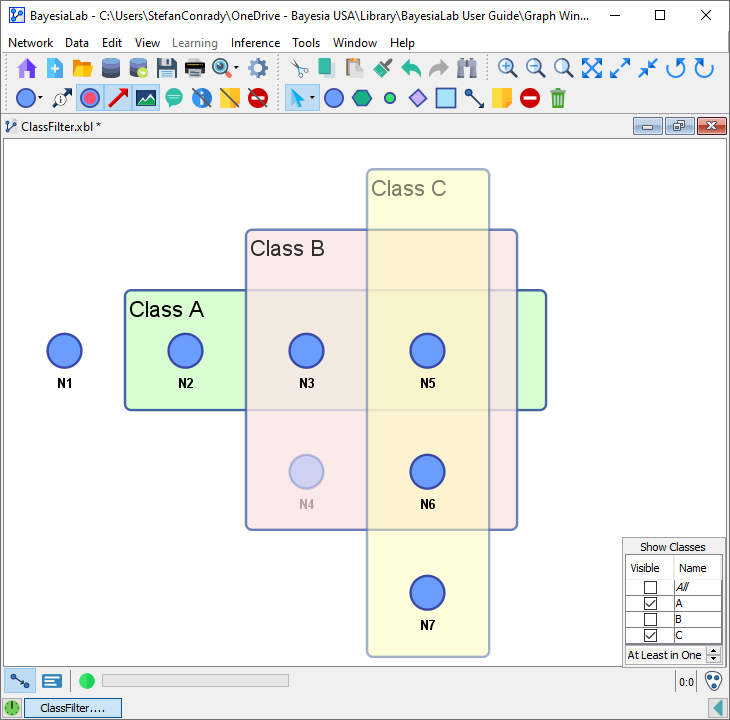
Selection: B, C
Visible Nodes:
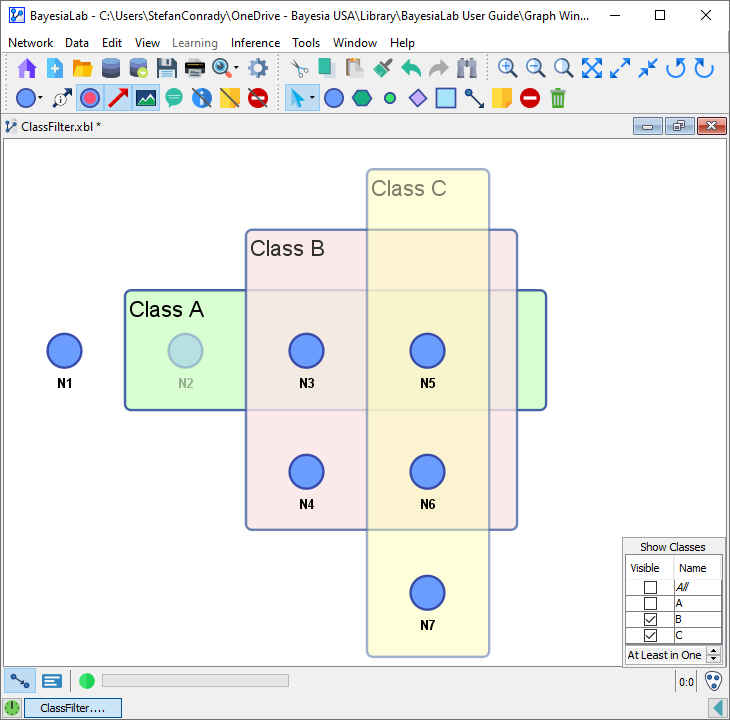
AND/Intersection (“At Least in Each”)
Selection: All
Visible Node:
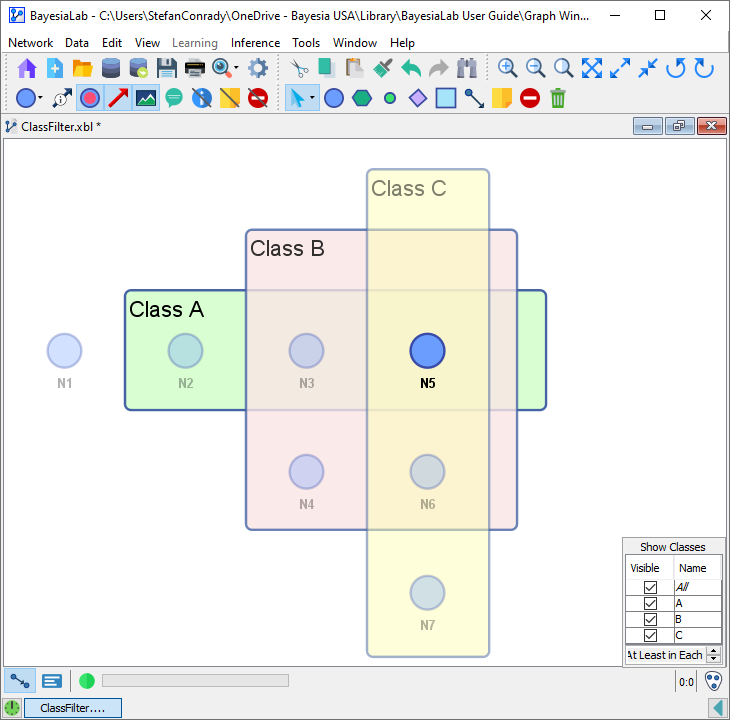
Selection: None
Visible Nodes:
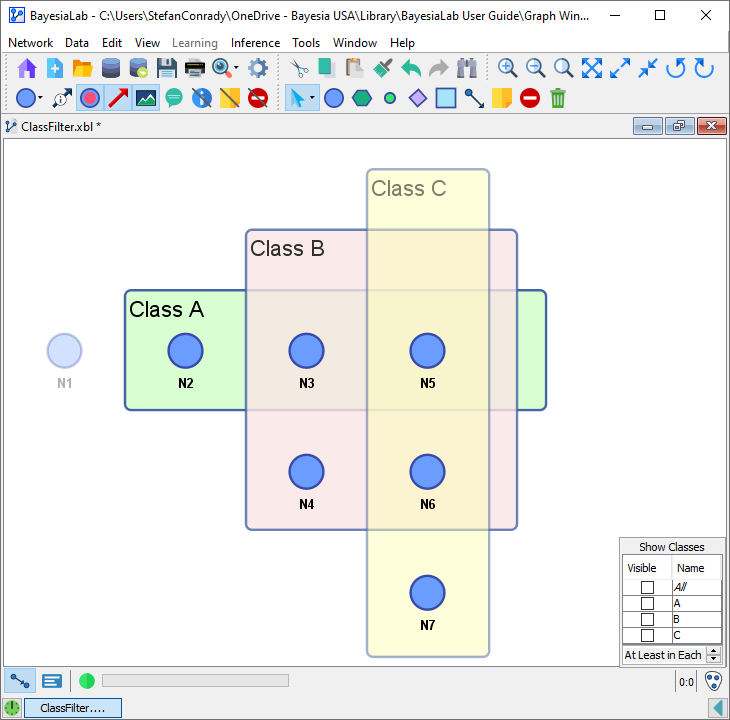
Selection: A
Visible Nodes:
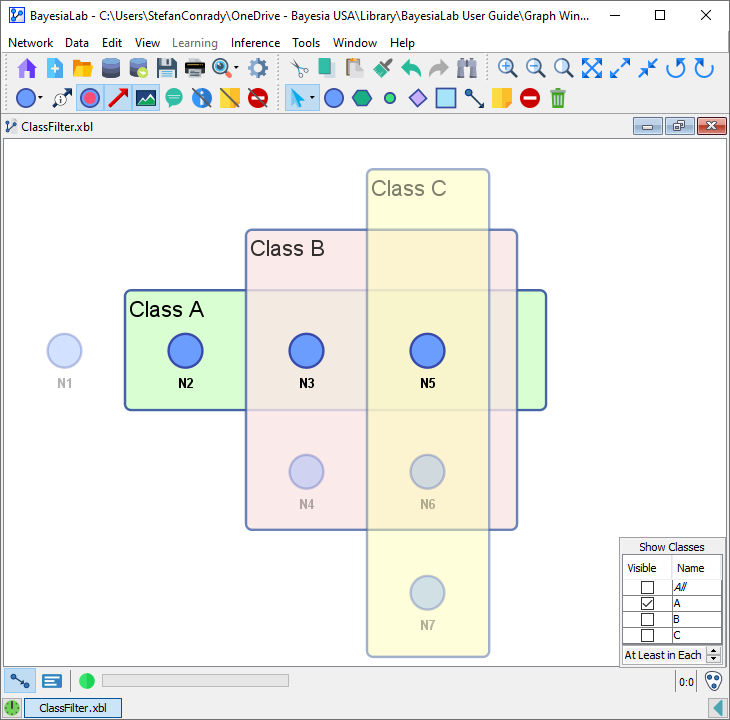
Selection: B
Visible Nodes:
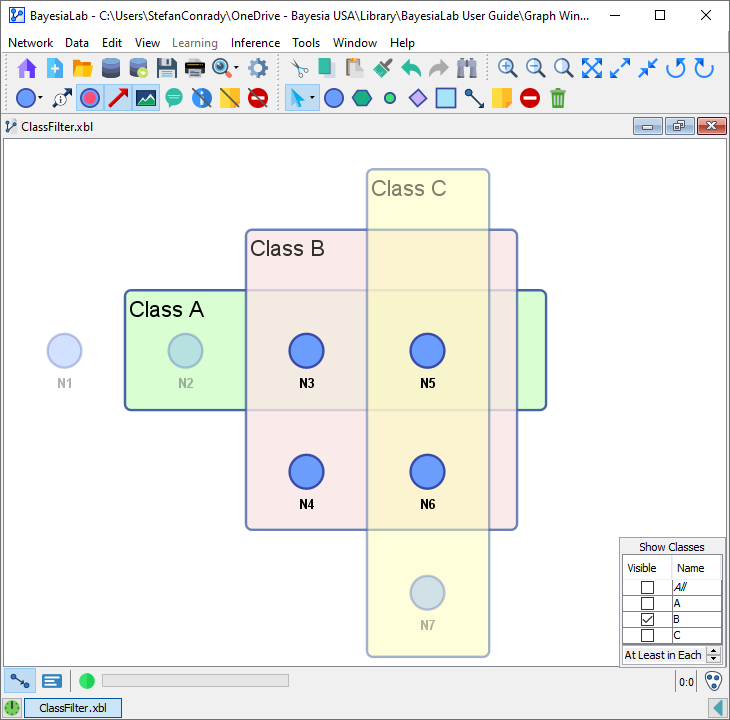
Selection: C
Visible Nodes:
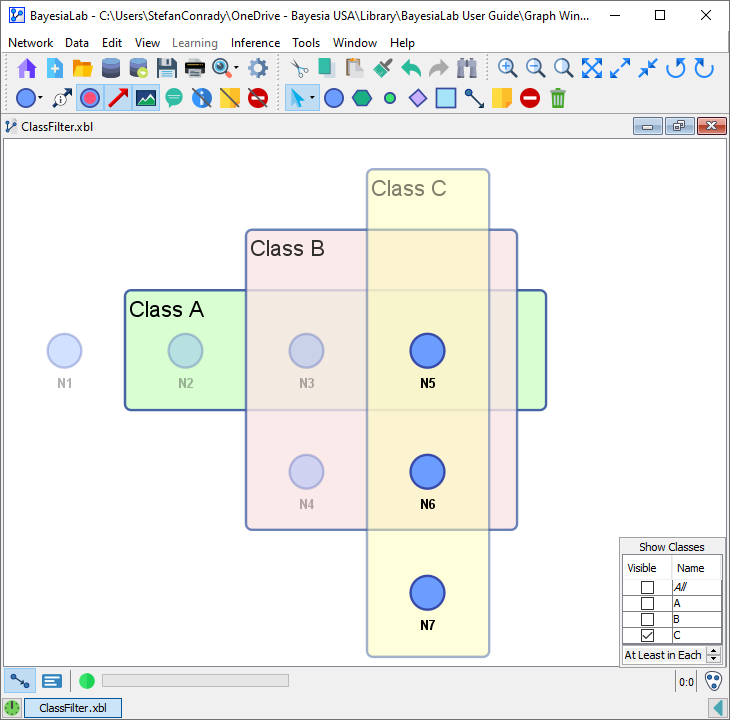
Selection: A, B
Visible Nodes:
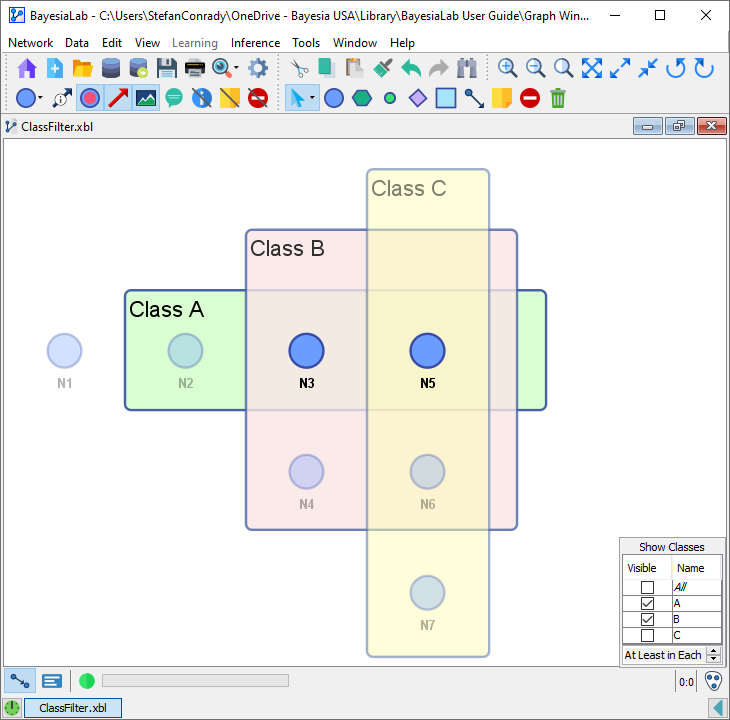
Selection: A, C
Visible Nodes:
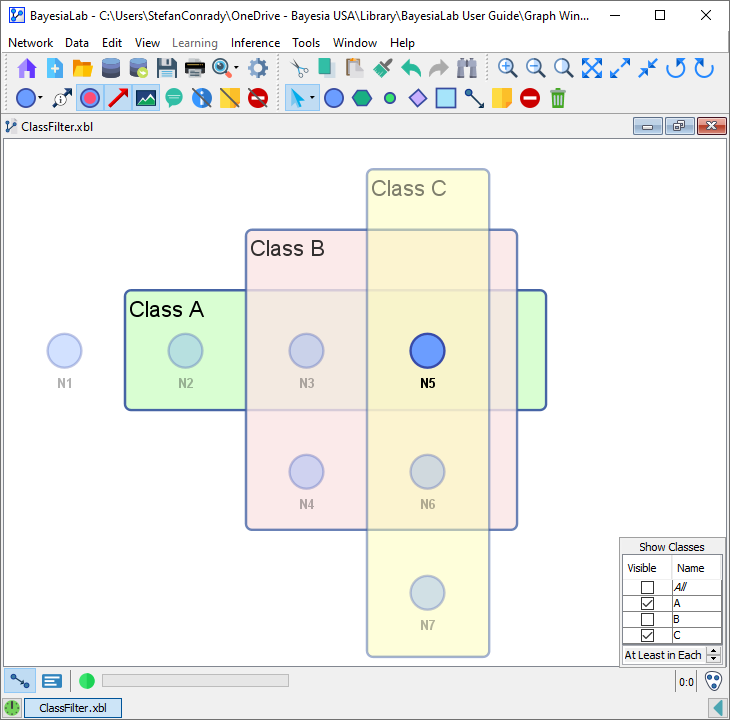
Selection: B, C
Visible Nodes:
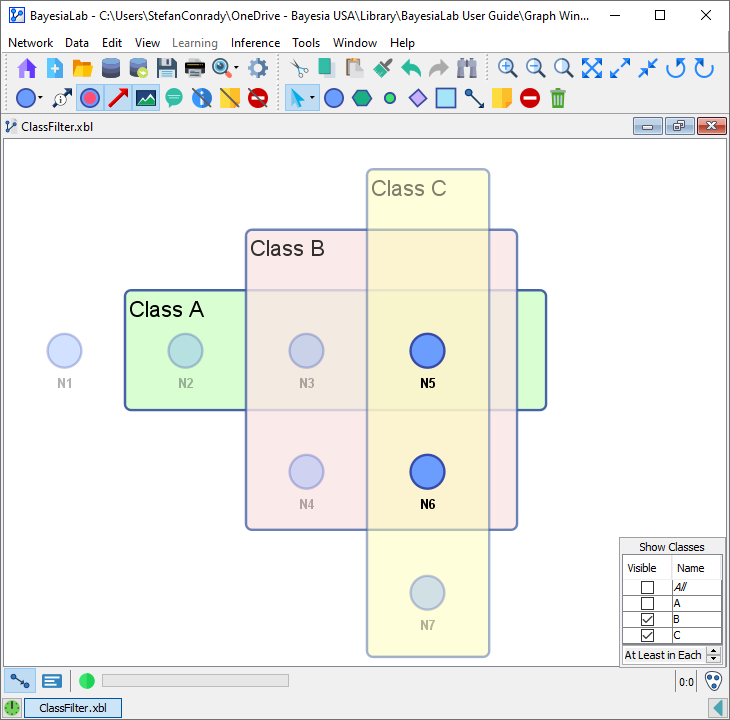
STRICT AND/Intersection (“Only in Each”)
Selection: All
Visible Node:
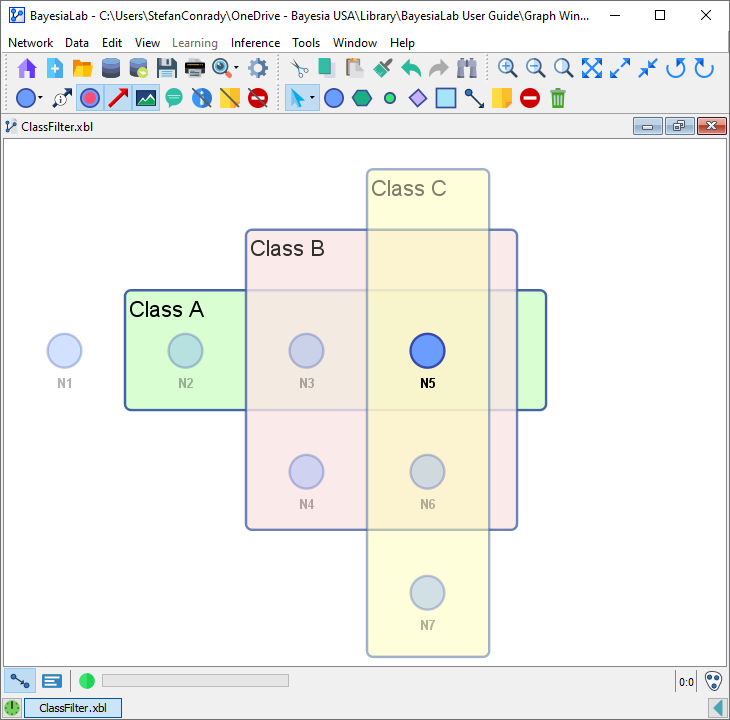
Selection: None
Visible Node: ∅
